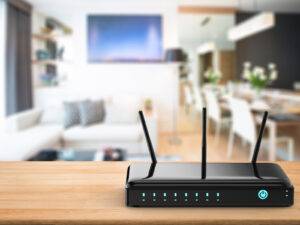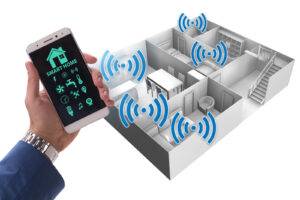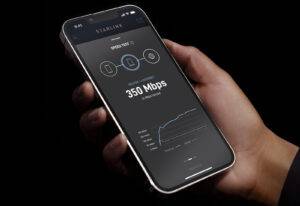Wireless Wonders: Discovering the Hottest Trends in Wi Fi Technology
Wi Fi technology has come a long way since its inception.
From simple wireless network connectivity to now enabling the Internet of Things (IoT) and powering smart homes, wireless technology is constantly evolving and improving our lives in unimaginable ways. One of the most widely used technologies in this space is Wi Fi.
In this article, we will take a closer look at some of the hottest trends in Wi Fi technology that are driving innovation and transforming the way we live, work and play.
The History of Wi Fi Technology

Wi Fi connection technology started out in the early 1990s as a means of providing wireless wi fi connections to devices such as laptops and mobile phones.
The first version, known as IEEE 802.11, was capable of delivering speeds of up to 2 Mbps. Since then, Wi Fi has gone through several iterations, each one faster and more reliable than the last.
Today, the latest version of Wi Fi, known as 802.11ax or Wi-Fi 6, is capable of delivering speeds up to 9.6 Gbps and supports a large number of devices simultaneously.
The Rise of Wi-Fi 6
Wi-Fi 6, also known as 802.11ax, is the latest generation of wireless technology that promises faster speeds, increased capacity and improved performance. With a higher maximum data rate of up to 9.6 Gbps, Wi-Fi 6 is set to deliver a seamless and robust internet experience for users.
Additionally, it uses Orthogonal Frequency Division Multiple Access (OFDMA) technology which allows multiple devices to be served simultaneously, thus reducing congestion and improving Wi Fi network connection and efficiency.
One of the key features of Wi-Fi 6 is its ability to handle large numbers of connected devices without compromising network performance. This is especially important in the age of IoT where an increasing number of devices such as smart home appliances, wearables, and industrial sensors are connecting to wireless networks.
The Emergence of Wi-Fi 6E
Building on the advancements of Wi-Fi 6, the Federal Communications Commission (FCC) recently opened up the 6 GHz spectrum for unlicensed Wi Fi use, thus paving the way for Wi Fi 6E. This new technology will provide even faster speeds and lower latency by utilizing the newly available spectrum, resulting in a smoother and more reliable wireless experience.
With this development, we can expect to see an increase in applications that require high bandwidth such as virtual reality (VR), augmented reality (AR), and 4K/8K video streaming.
The Evolution of Mesh Wi Fi Networks
The traditional wireless network operates on a hub-and-spoke model, with a single router broadcasting a signal to all connected Wi Fi devices. However, this can lead to dead spots and weak signals in larger homes or buildings.
Mesh Wi-Fi networks solve this problem by using multiple access points (APs) to create a single, seamless wireless network. These APs work together to cover the entire area with a strong and consistent Wi-Fi signal, eliminating dead zones and improving overall network performance.
Moreover, mesh networks are self-healing and self-configuring, meaning they can automatically detect and fix issues within the Wi Fi network without any intervention from users. This makes them an ideal solution for large and complex environments, such as offices, campuses, and multi-story homes.
The Impact of Wi-Fi 6 on Businesses
As businesses are becoming increasingly reliant on wireless technology to operate, the advancements in Wi-Fi 6 are proving to be a game changer. Faster speeds and lower latency means improved productivity, faster data transfers, and the ability to handle more devices simultaneously. Additionally, the increased capacity of Wi-Fi 6 enables businesses to deploy more IoT devices, leading to better insights and improved efficiency.
Furthermore, with the rise of remote work and virtual meetings, having a reliable and seamless wireless internet connection is crucial for businesses to stay connected and collaborate effectively.
Internet of Things and Smart Homes

The Internet of Things (IoT) has revolutionized the way we live and a reliable Wi Fi network plays a crucial role in making this possible. From smart thermostats to security cameras, IoT devices connect to our wireless router to provide us with convenience, automation, and real-time data insights.
With the advancements in Wi-Fi 6 and 6E, we can expect to see an increase in the number of connected devices in our homes, making them smarter and more interconnected than ever before. This will lead to a more seamless and efficient living experience, with the ability to control and monitor various aspects of our homes remotely.
What hardware is needed for Wi Fi 6 and 6E?
To take advantage of the latest Wi-Fi 6 and 6E technology, users will need to upgrade their wireless devices. This includes not only routers but also mobile devices such as smartphones, laptops, tablets, and other connected devices.
Fortunately, many new devices are now being released with built-in support for Wi-Fi 6 and some even support both 6 GHz bands for Wi-Fi 6E.
As the demand for faster and more reliable wireless internet continues to grow, we can expect to see an increasing number of devices supporting these new technologies in the near future.
Wireless Access Point and Mesh Networks

In addition to upgrading their devices, businesses and individuals may also need to invest in wireless access points (APs) or mesh networks to fully take advantage of Wi-Fi 6 and 6E. These networking solutions are essential for providing widespread coverage and strong signals throughout a home or office. Moreover, businesses may require advanced network management tools to effectively manage and troubleshoot their networks, especially with the increasing number of connected devices and complex infrastructures.
What is a Mesh Wi Fi Network?
A mesh Wi-Fi network is a network that consists of multiple access points (APs) working together to create a single, seamless wireless network. These APs are strategically placed throughout an area, ensuring strong and consistent Wi-Fi coverage in every corner. The APs communicate with each other to determine the best path for data transmission, effectively creating a self-healing and self-configuring network.
Mesh networks are especially beneficial for larger homes or offices where a single router may not provide sufficient coverage, and they can also support a higher number of connected devices with minimal impact on network performance.
Furthermore, many mesh Wi-Fi systems come with advanced features such as parental controls, guest networks, and device prioritization to help users manage their home or office network effectively.
What are the 3 main types of wireless networks?
- Wireless Local Area Network (WLAN):
A WLAN is a type of wireless network that connects devices within a limited geographical area, such as an office building or home. These networks are commonly used to provide internet access and enable communication between connected devices.
- Wireless Metropolitan Area Network (WMAN):
A WMAN covers a larger geographical area compared to WLANs and is typically used to provide wireless internet access in cities or towns.
- Wireless Wide Area Network (WWAN):
A WWAN covers a wide geographical area, such as an entire country or continent. These networks are commonly used for cellular data connections and satellite communications.
With the advancements in Wi-Fi technology, we can now also see the emergence of hybrid networks that combine different types of wireless networks to provide seamless coverage and connectivity. These include Wireless Mesh Networks (WMN) and Hybrid Wireless Networks (HWN).
Overall, the evolution of Wi-Fi has brought about significant improvements in wireless technology, allowing us to stay connected wherever we are.
As Wi-Fi 6 continues to evolve, and the upcoming emergence of Wi-Fi 6E, we can expect even faster speeds, greater capacity, and a more reliable wireless experience in the years to come.
The Future of Wi Fi

As the demand for faster and more reliable wireless internet continues to grow, Wi-Fi connections will continue to evolve and improve. Some experts predict that we may see up to 20 Gbps speeds with Wi-Fi 7 in the future, making tasks such as streaming high-definition video and downloading large files even faster.
Furthermore, with the increasing adoption of IoT devices and the rise of smart cities, Wi-Fi technology will play a crucial role in connecting our devices, homes, and cities. With the constant advancements in wireless network technology, the possibilities for a more connected and convenient future are endless.
Wi Fi 7 and Beyond
While we cannot predict exactly what the future of Wi-Fi will hold, it is clear that the demand for a faster and more reliable internet connection will continue to drive advancements in this technology. We can expect to see even higher speeds, increased capacity, and improved efficiency with each new generation of Wi-Fi.
Moreover, we may also see advancements in areas such as security and privacy, as the need for secure wireless connections becomes increasingly important. With the rapid growth of IoT devices and emerging technologies such as 5G, Wi-Fi technology will also likely play a crucial role in connecting these devices and supporting their functionality.
Electrical and Electronics Engineers

As Wi-Fi technology continues to evolve, the demand for skilled professionals in this field will also grow.
Electrical and Electronics Engineers play a critical role in designing and developing wireless networks, ensuring they work efficiently and can handle increasing demands. They are also responsible for creating innovative solutions to overcome challenges and improve the overall performance of wired and wireless networks.
With the increasing importance of wireless networks in our daily lives, the role of Electrical and Electronics Engineers will continue to be crucial in shaping the future of Wi-Fi.
So if you have a passion for technology and enjoy problem-solving, pursuing a career as an Electrical or Electronics Engineer may be a rewarding choice.
Conclusion
In conclusion, Wi-Fi has come a long way since its inception in 1997.
With the continuous advancements in Wi-Fi 6 and the upcoming emergence of Wi-Fi 6E, we can expect even faster speeds, greater capacity, and a more reliable wireless experience in the years to come.
Furthermore, with the increasing adoption of IoT devices and the rise of smart cities, Wi-Fi technology will play an essential role in connecting our world and enabling the seamless functioning of our devices and services. As we look towards the future, it is clear that Wi-Fi will continue to evolve and improve, offering us a more connected and convenient way of life.

